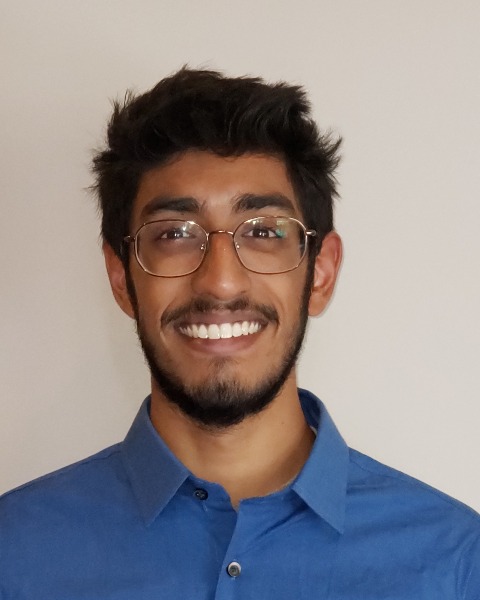Cellular and Molecular Bioengineering
(H-294) The effect of lung cancer-associated fibroblasts on the functionality of vasculature

Naveen R. Natesh, MS
Ph.D. Candidate
Duke University
Durham, North Carolina, United States- SV
Shyni Varghese
Professor
Duke University, United States
Presenting Author(s)
Primary Investigator(s)
The tumor microenvironment (TME) is composed of tumor cells, associated stroma, immune cells and cancer-associated fibroblasts (CAFs), hypoxia, vasculature, and extracellular matrix (ECM) which all function in concert to promote the growth and dissemination of tumor cells as well as hamper immune cell cytotoxicity against tumors [1, 2]. As the tumor grows beyond 1-2 mm, it resides further from the vasculature and outside of the mass transport limit [3]. This leads to hypoxia- and/or growth factor-driven neo-vasculature. The resultant vasculature is aberrant and characterized by high permeability, frequent blunt ends, narrow lumens, and tortuousness [4]. Aberrant tumor vasculature has been shown to limit drug delivery and T-cell anti-tumor immunity [3]. The contribution of CAFs to the formation of tumor vasculature is not well understood, and could potentially realize new therapeutic targets to prevent tumor growth and dissemination. Here, we apply a microfluidic device to study the effect of primary human lung CAFs on vasculature formation and functionality. Our results show compromised vascular network formation by human umbilical vein-derived endothelial cells (HUVECs) when cultured with CAFs. However, indirect co-culture of HUVECs with CAFs resulted in a perfusable, but leaky vascular network.
Materials and Methods::
We adapted a previously described microfluidic device comprised of three hydrogel channels each flanked by media channels [5]. The general format of our assay involves a two step seeding process (Figure 1A). Briefly, HUVECs are suspended in 0.5U/mL Thrombin:EGM2 and 2.5mg/mL fibrinogen and injected into each hydrogel channel at a concentration of 25 million cells/mL. Excess cells are aspirated to confine HUVECs to the regions between microposts, allowing eventual lumen formation at the micropost openings for perfusion. For direct co-cultures, HUVECs and normal human lung fibroblasts (NHLFs) or lung adenocarcinoma derived CAFs (Cell Biologics cat. no. HC-6013A) are mixed at varied ratios according to the experiment (Figure 1) in 2U/mL Thrombin:EGM2 and 2.5mg/mL fibrinogen. For indirect co-cultures, HUVECs alone are seeded in the central hydrogel channel, and both flanking channels are seeded with either NHLFs or CAFs at a 3:1 HUVEC:CAF concentration ratio. Finally, the devices are kept in a humidified chamber for 15 minutes at room temperature to allow polymerization of fibrin, after which EGM-2 media is added to each media channel. Devices are cultured for 4-5 days prior to staining with VE-CAD or perfusing with 2000 kDa FITC-Dextran. To analyze microvasculature (mVN) formation within the chips, fluorescent images were loaded into AngioTool, a computational tool which identifies vessels and measures multiple metrics such as vascular coverage, lacunarity, and junction density [6].
Results, Conclusions, and Discussions::
To evaluate the effect of CAFs on mVN formation, we co-cultured the cells at 7:1 ratio of HUVEC:CAF and 7:1 HUVEC:NHLF. We observed minimal HUVEC sprouting and vascular anastomosis resulting in a large number of blunt ends and no perfusable lumens in the co-cultures with CAFs relative to those with NHLFs (Figure 1B).
Reasoning that it could be due to rapid proliferation or metabolic take-over of the co-culture by CAFs, we varied the number of CAFs. While we observe a greater amount of anastomosis, still no perfusable vasculature was seen in the co-cultures with a similarly large number of blunt endedness (Figure 1B,C). In order to interrogate the effect of CAF secreted factors, we co-cultured fibroblasts and HUVECs indirectly by seeding CAFs or NHLFs in flanking hydrogel channels and HUVECs in the central channel for vasculature formation. Interestingly, we found that indirect co-culture with CAFs led to a perfusable network with greater vascular coverage, indicating an effect on the proliferation of endothelial cells. However, perfusion of 2000 kDa FITC-Dextran through the vascular networks yielded significantly greater permeability in the CAF-treated mVN versus the NHLF-treated mVN (Figure 1D,E). Together, these findings suggest the plausible effect of CAF secreted factors on the quality of vasculature, and our ongoing studies are interrogating the identity of these differential factors.
Through our future studies, we expect to detect differential levels of secreted factors and identify top hits which could be therapeutically intervened upon with small molecule inhibitors or genetic perturbation. Understanding that the tumor vasculature is a key component of virtually every solid tumor, it is highly likely that the aberrant functionality of the vasculature plays multi-faceted roles apart from mediating hypoxia. For example, transendothelial migration of T cells must occur for their infiltration into tumor stroma and eventual anti-tumor cytotoxicity. It is plausible that tumor vasculature is largely inhibitory to the migratory capacity of T cells and would thus be but one interesting problem we hope to adapt our findings towards solving.
Acknowledgements (Optional): :
References (Optional): :
1. Joyce, J.A. and D.T. Fearon, T cell exclusion, immune privilege, and the tumor microenvironment. Science, 2015. 348(6230): p. 74-80.
2. Baghban, R., et al., Tumor microenvironment complexity and therapeutic implications at a glance. Cell Commun Signal, 2020. 18(1): p. 59.
3. Dewhirst, M.W. and T.W. Secomb, Transport of drugs from blood vessels to tumour tissue. Nat Rev Cancer, 2017. 17(12): p. 738-750.
4. Lugano, R., M. Ramachandran, and A. Dimberg, Tumor angiogenesis: causes, consequences, challenges and opportunities. Cell Mol Life Sci, 2020. 77(9): p. 1745-1770.
5. Chen, M.B., et al., On-chip human microvasculature assay for visualization and quantification of tumor cell extravasation dynamics. Nat Protoc, 2017. 12(5): p. 865-880.
6. Zudaire, E., et al., A computational tool for quantitative analysis of vascular networks. PLoS One, 2011. 6(11): p. e27385.
